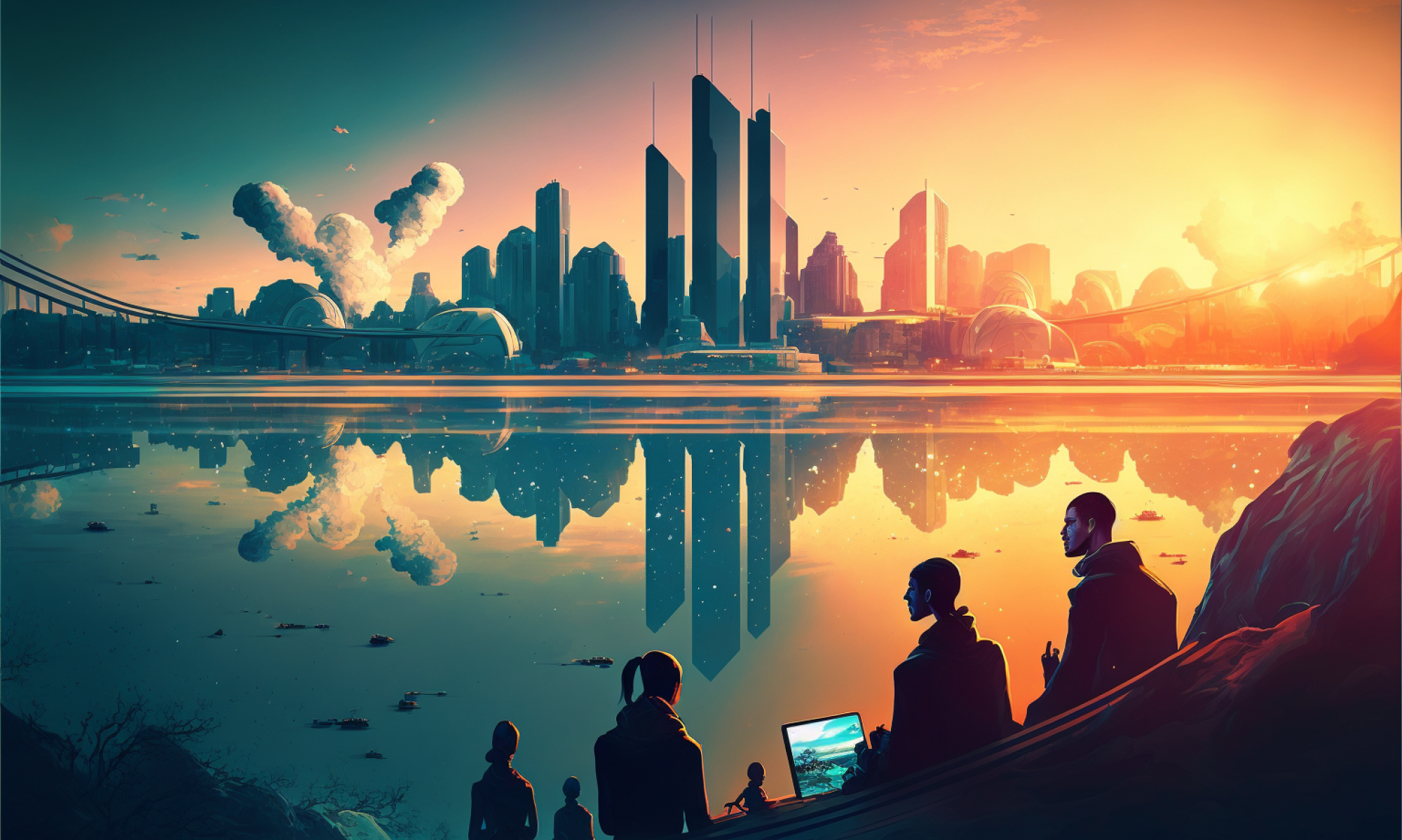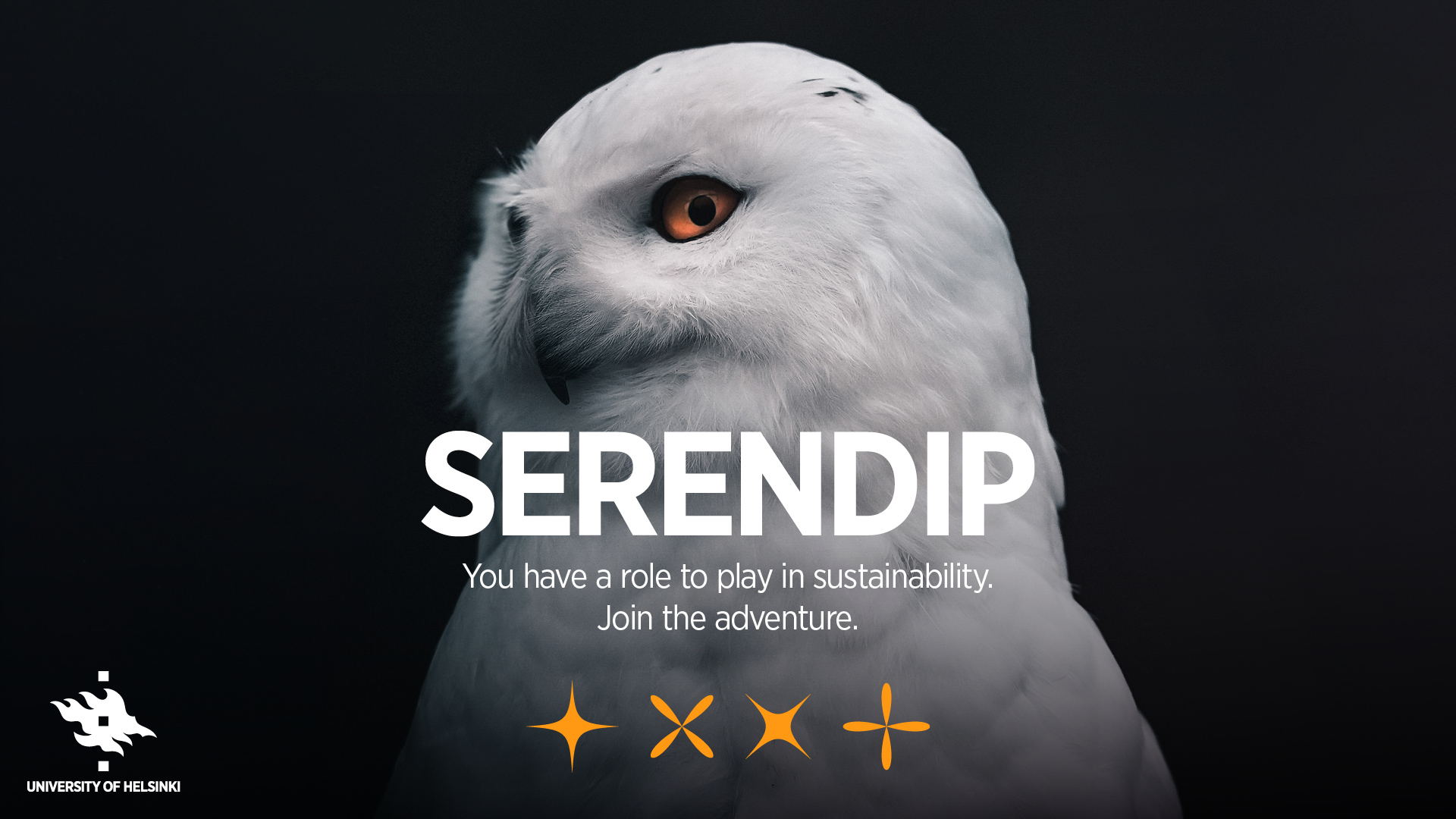Launching Serendip project on November 9, 2023!
When we started the Global campus project in 2022, we were given the freedom to experiment the limits of online learning. We were expected to do really bold, even risky EdTech experiments. So, we thought very carefully how we could use our time wisely. We wanted to know what this university wants or needs? What could be something bold that would benefit all the members of the university community regardless of the faculty and beyond?
One of the strategic goals for the University of Helsinki is to advance ecological sustainability and responsibility. The University is dedicated to integrate the themes of sustainability into all education programmes.
Well-designed digital and physical environments for work, teaching and learning will enhance ecological sustainability and promote encounters with others, support creativity, renew forms of collaboration and improve accessibility.
Following this mission, sustainability became a topic that would be the glue of our work. In the design process, we asked from teachers and students what they are missing regarding sustainability education. We learned that a virtual space where students would gather together around the world to solve the sustainability challenges would be the secret wish of the sustainability teachers.
Students, on the other hand, wanted to travel in 3D worlds and learn how to influence stakeholders. They wished to improve their skills in finding the intervention points in decision-making processes. Students also desired to see hope and use their all senses. We knew we wanted to do this. And this was the foundation for a bold EdTech experiment, the project called Serendip*.

Based on our pedagogical framework, we believe that learning should be engaging and fun but also at the same time personalized and efficient. By offering students a visually appealing virtual reality learning environment with diverse multi-disciplinary learning content and a chance to actually train the sustainability competencies, we can help students to become the change agents this world needs.
The learning content has been developed together with researchers, teachers and students from different disciplines. The research-based content together with state-of-the-art technologies make an engaging learning experience. In virtual reality we could make impossible possible, travel in time and place and practice empathy.

Also, we identified that by taking the AI tools to the next level, we could increase the interaction between a student and the learning content. Therefore, we designed virtual AI-powered characters for different pedagogical purposes for the game. Each discussion is different and personalized, based on the student´s own interests.
The first game episode, the Boreal Forest, one of the tipping elements in earth´s climate system, is an adventure through snow and woods. It combines forest economy, forest ecology and well-being with Indigenous studies. It helps the students to practice their systems-thinking, values-thinking and intrapersonal skills.
We see that you have a role to play in sustainability, so we are happy to invite you to participate as a teacher, a student or a subject-matter expert and co-create with us the further episodes. Learn more on serendip.fi and join the adventure by sharing us how you would like to take part by filling in the form. Can a learning environment for the sustainability education look like this?

* Serendip = The word serendipity, originating from an old Persian fairytale “the Three Princes of Serendip”, means unplanned fortunate discoveries. The Serendip Learning Adventure is based on serendipitous learning approach where, through exploration, learners might discover unexpected and interesting connections among phenomena which can lead to meaningful learning. Serendipity, as valuable unexplored sources for learning, can be fostered through engagement and interaction. We see that sustainability challenges need innovations which can be results of serendipitous events.





